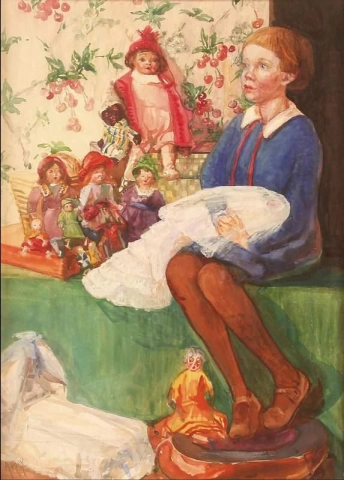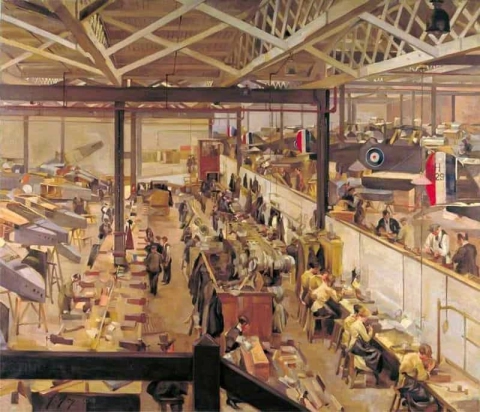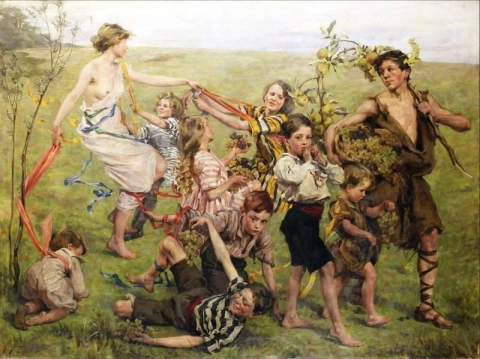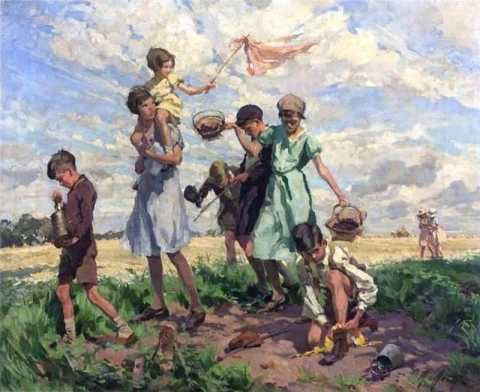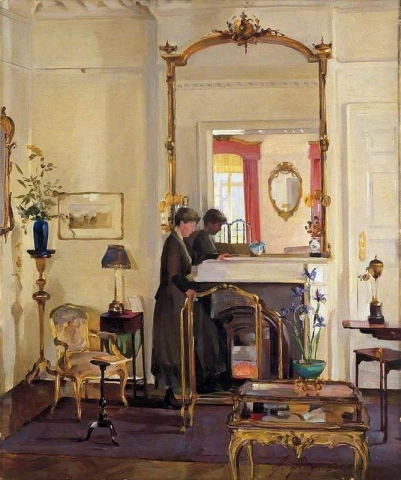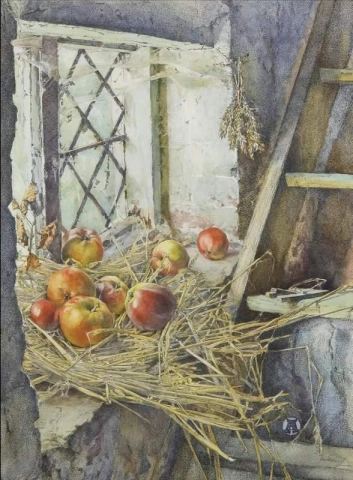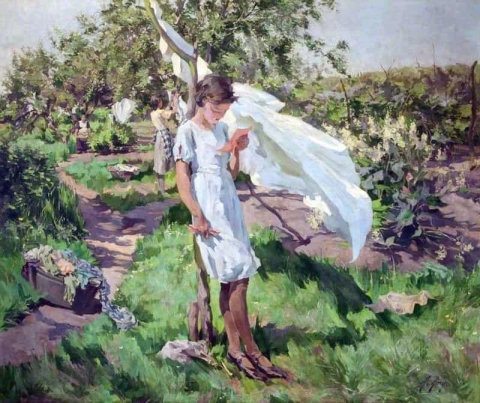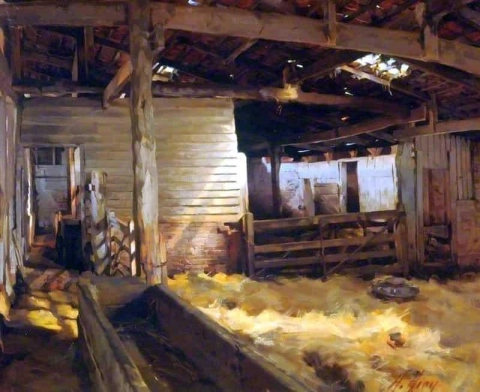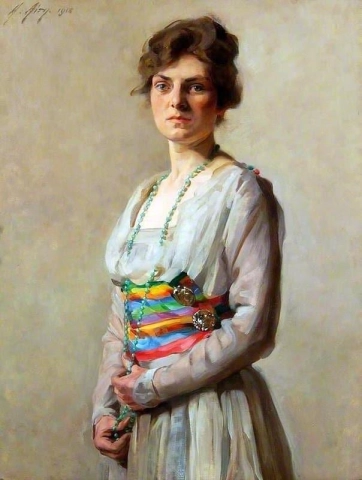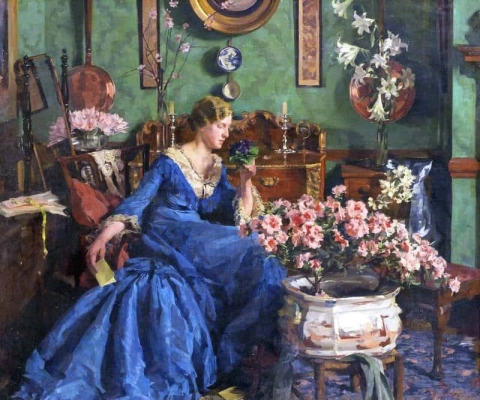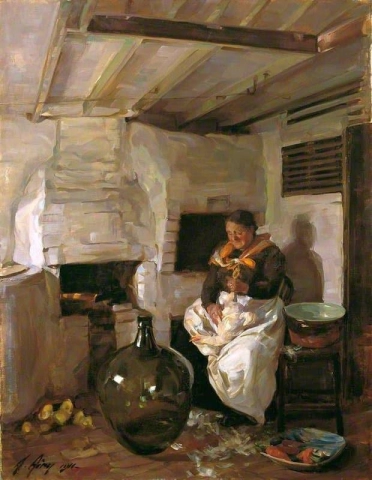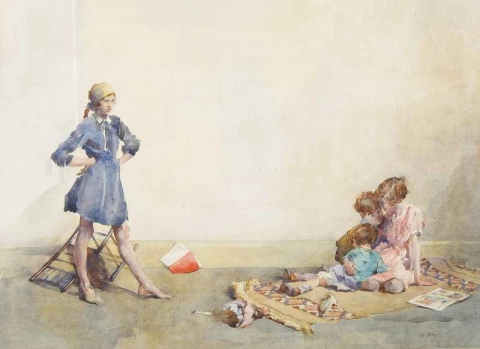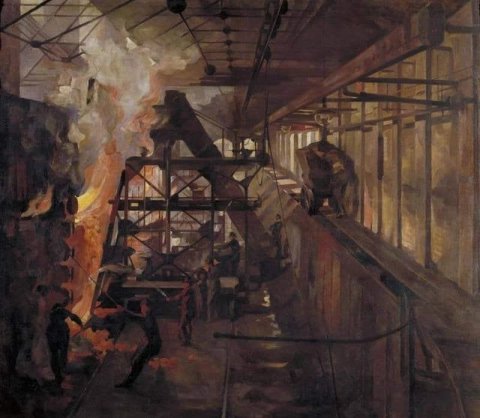
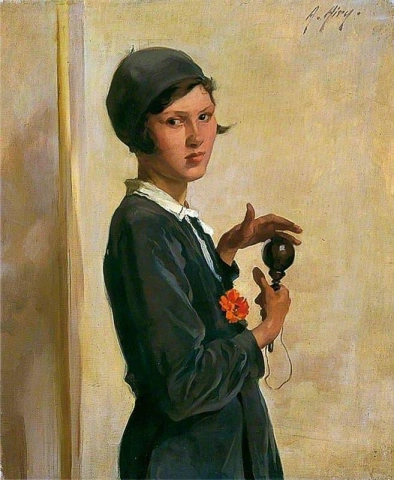
Hand painted reproductions of Anna Airy
Anna Airy: A Pioneering British Painter and Printmaker
Anna Airy (1882–1964) was a British painter and printmaker, widely recognized for her vibrant and evocative works that captured the industrial landscape and everyday life during the early to mid-20th century. A prominent female figure in the British art scene, Airy’s style ranged from precise realism to expressionistic depictions of workers, cityscapes, and nature. Her contributions to British art in the 20th century helped to shape the visual language of her time, particularly in the areas of war art, industrial scenes, and social realism.
Early Life and Education
Anna Airy was born in 1882 in London, England, and demonstrated an early interest in the arts. Encouraged by her family, she began studying art at a young age. Airy attended the prestigious Slade School of Fine Art in London, where she received a rigorous academic training that laid the foundation for her future artistic endeavors. Her years at the Slade allowed her to hone her skills in drawing, painting, and printmaking, all of which would become integral to her later career.
In addition to formal training, Anna Airy was influenced by the vibrant artistic community in London, which included movements such as the Camden Town Group and the early stages of Modernism. These influences, combined with her exposure to the changing social landscape of early 20th-century Britain, gave Airy a distinctive perspective on her environment, which would resonate in her works.
Artistic Development and Style
Anna Airy’s artistic style evolved over her lifetime, reflecting both the social and political changes in Britain as well as her personal engagement with contemporary art movements. Early in her career, Airy’s works were influenced by Impressionism, evident in her loose brushwork and bright, atmospheric landscapes. However, her later works moved towards a more detailed and expressive style, often blending elements of realism with a more emotional, sometimes even raw, depiction of working-class life and industrial landscapes.
One of Airy’s most famous and significant bodies of work focused on depicting the industrial world. Her iconic series of paintings and prints of factories, dockyards, and steel mills stand as powerful testaments to the human experience within an industrialized society. Airy’s ability to capture the dynamic energy of these environments with an almost cinematic intensity made her works stand out during a period when industrialization was changing the face of Britain.
In her portrayal of people, particularly factory workers and soldiers during wartime, Airy emphasized a deep connection to her subjects, highlighting their strength, resilience, and the dignity of labor. Her use of color was bold and evocative, with contrasts between light and shadow often conveying the rawness of the industrial process and the emotions of the workers.
Themes and Significance
The major themes of Anna Airy’s work include the effects of industrialization, the experiences of working-class people, and the emotional impact of war. Airy’s paintings and prints often explored the intersection of these themes, showing the complexity of life in the modern world and the human cost of industrial progress.
Airy’s depiction of the industrial landscape was both a celebration and a critique. Her factory scenes, while emphasizing the power and scale of industry, also conveyed the strenuous, sometimes dehumanizing nature of manual labor. By focusing on factory workers, dock workers, and other laborers, Airy made a conscious effort to elevate their role in society and explore the emotional and physical toll that industrial work took on individuals.
Another key theme in Airy’s work was the impact of war. During both World War I and World War II, Airy was commissioned as an official war artist. Her wartime works depicted soldiers, munitions factories, and scenes of everyday life during the war, providing a personal and empathetic perspective on the war experience. These works are notable for their emotional depth, capturing the human side of conflict rather than just the grand scope of military action.
Achievements and Influence
Anna Airy’s career was marked by numerous significant achievements, including being one of the first women to be elected to the Royal Academy of Arts in 1934. Her works were widely exhibited both in Britain and internationally, and she received numerous accolades for her contributions to British art. In addition to her paintings, Airy was also highly regarded for her work as a printmaker, particularly her lithographs, which were known for their striking compositions and bold lines.
Her role as a war artist during both world wars was particularly important. In World War I, Airy’s depictions of munitions factories were praised for their clarity and emotional power, while her wartime works during World War II highlighted the resilience and strength of British soldiers and civilians alike.
While Airy’s work was often rooted in realism, she had a profound impact on the development of British art during a time of significant social and technological change. Her commitment to portraying working-class life and the industrial landscape made her a pioneering figure in social realism. She was also a key member of the New English Art Club and exhibited alongside other leading artists of her time.
Legacy
Anna Airy’s legacy as an artist is defined by her powerful and empathetic depictions of industrial and wartime life. Her contributions to British art during the early 20th century left a lasting impression on the artistic community, and her works continue to be celebrated for their technical skill, emotional depth, and social relevance. Airy’s ability to humanize the industrial and wartime experience has ensured her place as a key figure in the history of British art.
Today, Anna Airy’s works can be found in prestigious collections such as the Tate Britain and the Imperial War Museum. Her paintings continue to be studied for their unique insights into the intersection of art, society, and industrial progress.
Where to Find Reproductions of Anna Airy’s Art
For collectors and art enthusiasts wishing to bring the powerful and evocative works of Anna Airy into their own homes, high-quality reproductions of her paintings and prints are available from various art services. These reproductions offer a chance to experience Airy’s compelling portrayal of industrial landscapes, workers, and wartime scenes, allowing the viewer to connect with the enduring relevance of her art.
Imagine owning an original work of art by Anna Airy, one of the greatest artists in history. At POD we offer you the opportunity to make this dream come true. We reproduce Anna Airy's works down to the smallest detail, so you can enjoy them in your own home.
Our reproductions are made by experienced artists who use the best materials and techniques. We are dedicated to providing you with the highest quality works of art, which will bring joy and inspiration to your family for generations.


